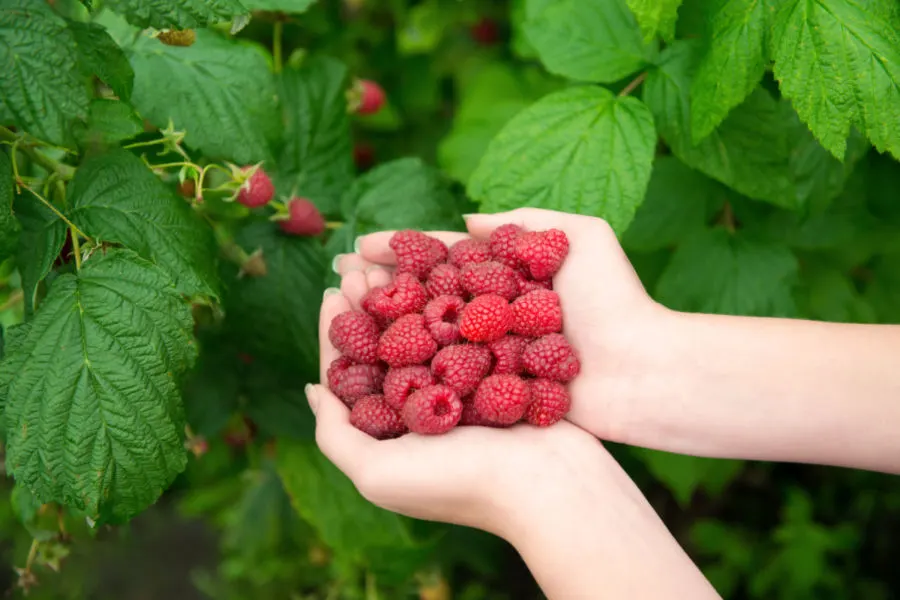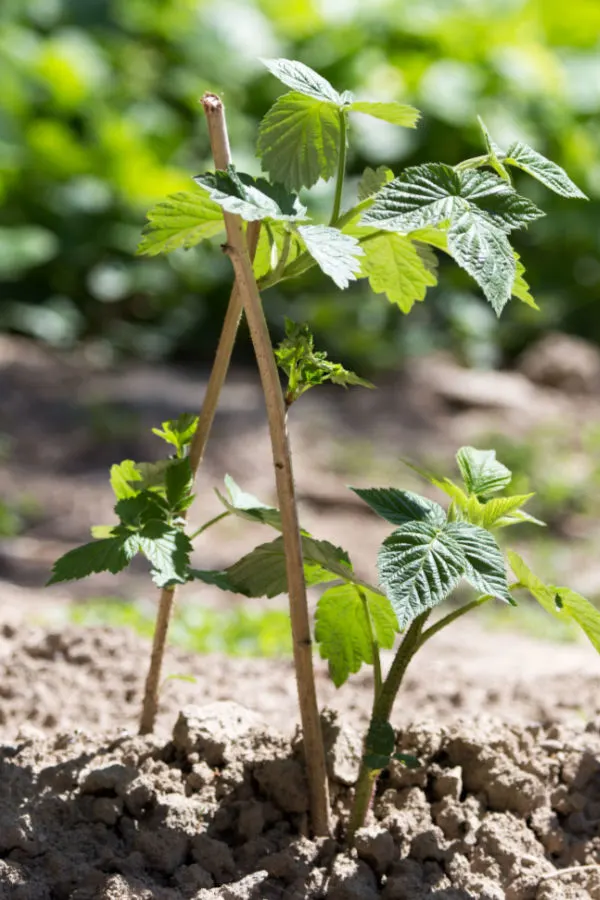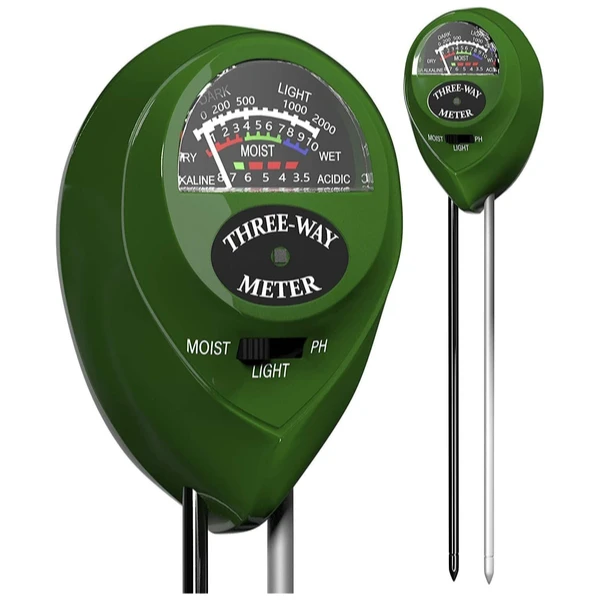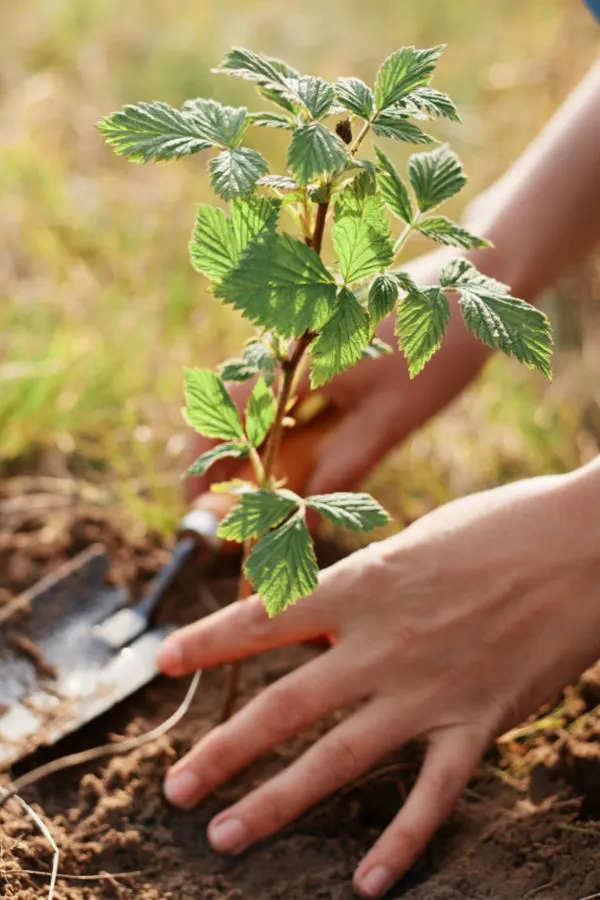Looking to plant and grow your own delicious crop of perennial raspberries in your backyard garden or raised beds?
Perennial fruits are a great addition to a traditional vegetable garden. Whether it’s adding raspberries, a few fruit trees and bushes, or planting asparagus, strawberries or blackberries in your landscape – the perennial harvest from these plants are a great compliment to the annual vegetables you can grow in a garden.
Once planted, they can add loads of nutritious food to your pantry every year. All without the work of having to replant each and every growing season. Perhaps even better, as you will see below, they are quite easy to maintain as well!

Raspberries are a true low-maintenance crop that produce their berries year after year without the need for constant attention. As an additional benefit, unlike planting perennial tree fruits that can take several years to come into production, raspberries can produce fruit in as little as one year.
How To Plant & Grow Raspberries
Raspberries are a member of the bramble (cane fruit) family. That family happens to also include blackberries and dewberries as well, and all three have similar growing requirements and habits for success.
Although brambles are considered to be a perennial, their growing style is quite unique. Brambles produce fruit on two year-old canes, meaning they will not flower or create any new fruit during their first year of growth.
Instead, during year one, all of the plant’s energy is concentrated on building up strength in the cane. Strength that is then utilized in year two to allow the cane to flower and fruit. Once the cane reaches the end of its second growing season, it then dies off completely.
So with this growing pattern, you may be wondering just how a raspberry plant classifies as a perennial? Although the canes do indeed die off after their second year, a brambles root system continues to produce new canes each year.

Because of this, once the raspberry establishes in the soil, it will continue producing 1st year canes each season, all while flowering out and fruiting the second year canes growing from its base. This simple growing schedule allows raspberries to produce a sizable harvest year after year.
Selecting A Location – How To Plant & Grow Raspberries
Success when planting and growing any bramble fruit all starts with selecting the right location. For a good harvest of raspberries, that means locating them where they can receive a lot of sunlight. In fact, the more the better for both production and health!
Raspberries need a minimum of six hours of sunlight to form and ripen their fruit. Anything less and they can struggle to build enough energy in their canes during the first year to bloom in the second. Although six hours will work, it will be best if you can find a location with a full eight hours of sunlight.
In addition to lighting requirements, select an area that does not retain moisture. Raspberries do not perform well in wet or low-lying areas as their root base can easily rot out.
Locations that are on a gentle slope always work well. As will any location where the soil has good drainage and where water will not pool. If planting on level ground, you can actually mound the soil a bit to allow excess water to drain away more easily.

Preparing The Soil For Planting – How To Grow Raspberries
Although raspberries will grow in moist soil types, they prefer soil that is slightly acidic. You can check your soil prior to planting with an inexpensive soil PH meter. If your soil ranges on the neutral to alkaline side, you can add a soil acidifier to the soil around your planting hole to help. Affiliate Product Link : Jobe’s Organics Soil Acidifier
When purchasing raspberry plants, you can either plant with bare roots or live plants. If going with bare roots, you can plant in early spring while the plant is dormant. If planting raspberry plants that have already leafed out, you will want to plant in the spring after the threat of frost has passed.
Whether planting bare roots or transplants, amend the planting hole with equal amounts of sand, compost and soil. This combination will help plants drain well, as well as provide adequate nutrients for strong growth.
Again, if your soil leans on the alkaline side, this is the time to add a soil acidifier to the planting hole. As an alternative to using a soil acidifier product, you can also add green pine needles to the planting hole. Green needles (fresh) will release acid into the soil. See: How To Use Pine Needles In Gardens & Flowerbeds
How To Plant Raspberries
There are two styles of raspberry plants, upright and vining (trailing). Both trailing and vining varieties can be thorn or thornless canes. Most gardeners growing in their backyard prefer thornless varieties for ease of maintenance and harvesting.

In addition to thorn and thornless, raspberries can be found in red, black or golden plant varieties. We have listed a few specific varieties below with plant links, but there are many more options as well. The good news is that all varieties grow and produce in the same fashion and require the same planting methods for success.
A Few Of Our Favorite Raspberry Plant / Bareroot Varieties
- Joan J. Thornless – an everbearing red raspberry with large firm berries. It is an excellent choice for those who are a bit fearful of picking around thorns. Affiliate Plant Link : Joan J. Thornless Raspberry Plants
- Heritage Raspberry – The Heritage raspberry is a proven, old-time heirloom variety with good production. Although it considered an everbearing variety, it will produce most of it’s crop during the mid-summer or early fall once established. Affiliate Plant Link : Heritage Raspberry Plants
Spacing Plants – How To Grow Raspberries
How you space your plants will depend on whether you are growing upright or vining varieties. If planting a vining type, space raspberries around 4 to 6 feet apart. For erect types, space plantings 12 to 18 inches apart.
As a general rule of thumb, whether planting bare root or transplants, work the soil for the planting hole to a depth and width of about 12 inches. This will provide plenty of loose soil, especially when mixing in the sand and compost to the soil.

Set bare roots in the hole so that the top of the root stock is at least one inch under the soil surface. For transplants, place the root ball in so that the soil surface of the plant is just slightly above the soil’s surface.
Water the soil around the plant and then place a few inches of mulch on top. This will help to keep the soil temperature regulated and competing weeds to a minimum. Green pine needles, which are slightly acidic, make an excellent mulch for brambles. You can also use hardwood mulch or straw.
Have Your Support System Ready – How To Plant & Grow Raspberries
Providing future support for new plants at planting time is extremely helpful for plant growth. Both upright and vining raspberry plants will benefit from support. It will help to keep plants off the ground and make harvesting much easier.
Trailing varieties can grow 10 to 20 feet long, so fences, arbors, or post and wire supports are all excellent choices. For uprights, planting along a fence or wall is usually enough to help them stay up.
Growing Raspberries – Long Term Care
Raspberries do not need much in the way of fertilizers to continue growing and producing. Adding a couple shovels of compost around the base of each plant crown each spring will provide more than enough nutrients.
Pruning vines and canes will help keep plants strong and healthy. For fall bearing varieties, cut back all growth in mid-winter to promote strong early-spring growth. For summer-fruiting varieties, simply cut back the brambles that produced fruit, leaving all first year growth brambles standing.
Here is to planting, growing and harvesting your own delicious crop of raspberries for years to come!
Follow Our Facebook Page For Great Gardening Tips And Advice! This Is My Garden Facebook Page
This Is My Garden is a garden website created by gardeners, for gardeners. Jim and Mary Competti have been writing gardening, DIY and recipe articles and books and speaking for over 15 years from their 46 acre Ohio farm. They publish three articles every week, 52 weeks a year. Sign up today to follow via email, or follow along!

